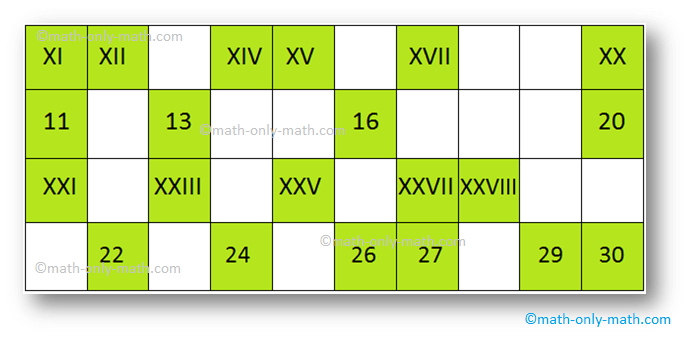Vertically Opposite Angles
What is vertically opposite angles?
When two straight lines intersect each other four angles are formed.
The pair of angles which lie on the opposite sides of the point of intersection are called vertically opposite angles.
In the given figure, two straight lines AB and CD intersect each other at point O. Angles AOD and BOC form one pair of vertically opposite angles; whereas angles AOC and BOD form another pair of vertically opposite angles.
Vertically opposite angles are always equal.
i.e., ∠AOD = ∠BOC
and ∠AOC = ∠BOD
Note:
In the given figure; rays OM and ON meet at O to form ∠MON (i.e. ∠a) and reflex ∠MON (i.e. ∠b). It must be noted that ∠MON means the smaller angle only unless it is mentioned to take otherwise.
For example; in the given figure, two lines WX and YZ are intersecting at a point O.
We observe that with the intersection of these lines, four angles have been formed. Angles ∠1 and ∠3 form a pair of vertically opposite angles; while angles ∠2 and ∠4 form another pair of vertically opposite angles.
Clearly, angles ∠1 and ∠2 form a linear pair.
Therefore, ∠1 + ∠2 = 180°
or, ∠1 = 180° - ∠2 …………(i)
again similarly, ∠2 and ∠3 form a linear pair.
Therefore, ∠2 + ∠3 = 180°
or, ∠3 = 180° - ∠2 …………(ii)
From (i) and (ii) we get;
∠1 = ∠3
Similarly, we can prove that ∠2 = ∠4
Thus, if two lines intersect then vertically opposite angles are always equal.
In the below figure, ∠1 and ∠2 are not vertically opposite angles, because their arms do not form two pairs of opposite rays.
Now, we will solve various examples on vertically opposite angles.
Worked-out problems on vertically opposite angles:
1. In the given figure, find the measure of unknown angles.

Solution:
(i) ∠3= 60° vertically opposite angles
(ii) ∠2 = 90° vertically opposite angles
(iii) ∠2 + ∠1 + 60° = 180° (straight angle)
90° + ∠ 1 + 60° = 180°
150° + ∠ 1 = 180°
Therefore, ∠1 = 180° — 150° = 30°
(iv) ∠1 = ∠4 vertically opposite angles
Therefore, ∠4 = 30°
2. In the given figure, lines PQ, RS, TV intersect at O. If x : y : z = 1 : 2 : 3, then find the values of x, y, z.
Solution:
The sum of all the angles at a point is 360°.
∠POR = ∠SOQ = x° (Pair of vertically opposite angles are equal.)
∠VOQ = ∠POT = y° (Pair of vertically opposite angles are equal.)
∠TOS = ∠ROV = z° (Pair of vertically opposite angles are equal.)
Therefore, ∠POT + ∠POR + ∠ROV + ∠VOQ + ∠QOS + ∠SOT = 360°
y + x + z + y + x + z = 360°
⟹ 2x + 2y + 2z = 360°
⟹ 2(x + y + z) = 360°
⟹ x + y + z = 3̶6̶0̶°/2̶
⟹ x + y + z = 180° --------- (i)
Let the common ratio be a.
Therefore, x = a, y = 2a, z = 3a
Therefore, from the equation (i) we get;
a + 2a + 3a = 180°
⟹ 6a = 180°
⟹ a = 1̶8̶0̶°/6̶
⟹ a = 30°
Therefore, x = a, means x = 30°
y = 2a, means y = 2 × 30 = 60°
z = 3a, means z = 3 × 30 = 90°
Therefore, the measures of the angles are 30°, 60°, 90°.
● Lines and Angles
Fundamental Geometrical Concepts
Some Geometric Terms and Results
Complementary and Supplementary Angles
Parallel and Transversal Lines
7th Grade Math Problems
8th Grade Math Practice
From Vertically Opposite Angles to HOME PAGE
Didn't find what you were looking for? Or want to know more information about Math Only Math. Use this Google Search to find what you need.
Recent Articles
-
Worksheet on 8 Times Table | Printable Multiplication Table | Video
Mar 18, 25 03:30 PM
Worksheet on 8 times table can be printed out. Homeschoolers can also use these multiplication table sheets to practice at home. -
Worksheet on Roman Numerals |Roman Numerals|Symbols for Roman Numerals
Mar 18, 25 02:47 PM
Practice the worksheet on roman numerals or numbers. This sheet will encourage the students to practice about the symbols for roman numerals and their values. Write the number for the following: (a) V… -
Conversion of Roman Numeration | Roman Numerals |Hindu Arabic Numerals
Mar 18, 25 02:12 PM
We will learn the conversion of Roman numeration. First we will learn how to convert numbers in roman numerals. 1. Convert 579 in roman numerals. -
Rules of Roman Numeration |Roman Number System|Roman Numeration System
Mar 18, 25 09:41 AM
We will learn about Roman Numeration and its rules. We know that there are seven basic Roman Numerals. They are I, V, X, L, C, D and M. These numerals stand for the number 1, 5, 10, 50, 100, 500 -
Divisible by 2 | Test of Divisibility by 2 |Rules of Divisibility by 2
Mar 17, 25 04:04 PM
A number is divisible by 2 if the digit at unit place is either 0 or multiple of 2. So a number is divisible by 2 if digit at its units place is 0, 2, 4, 6 or 8.










New! Comments
Have your say about what you just read! Leave me a comment in the box below. Ask a Question or Answer a Question.